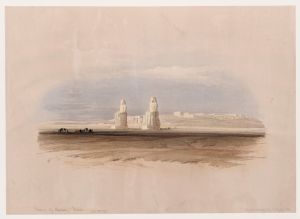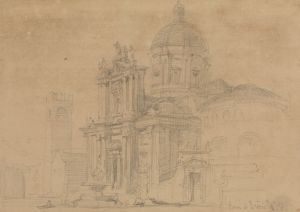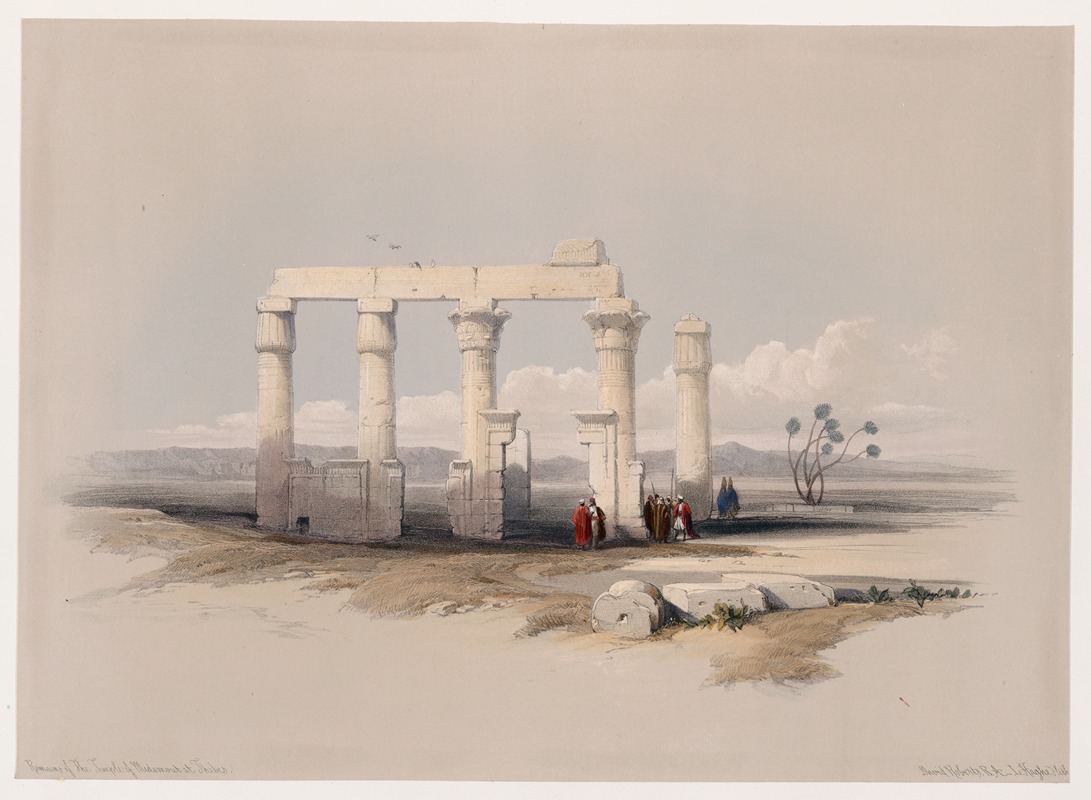
Remains of the Temple of Medamout, at Thebes.
A hand-painted replica of David Roberts’s masterpiece Remains of the Temple of Medamout, at Thebes., meticulously crafted by professional artists to capture the true essence of the original. Each piece is created with museum-quality canvas and rare mineral pigments, carefully painted by experienced artists with delicate brushstrokes and rich, layered colors to perfectly recreate the texture of the original artwork. Unlike machine-printed reproductions, this hand-painted version brings the painting to life, infused with the artist’s emotions and skill in every stroke. Whether for personal collection or home decoration, it instantly elevates the artistic atmosphere of any space.
David Roberts was a Scottish painter known for his detailed and picturesque depictions of architectural and historical sites. One of his works, "Remains of the Temple of Medamout, at Thebes," captures the ancient ruins of the Temple of Medamout, located near the city of Thebes in Egypt. This painting is part of Roberts' extensive collection of lithographs and paintings that document his travels in the Middle East and North Africa during the 19th century.
Roberts embarked on his journey to the Middle East in 1838, a trip that would significantly influence his artistic career. He traveled through Egypt, the Holy Land, and other regions, meticulously sketching the landscapes, monuments, and people he encountered. These sketches later served as the basis for his paintings and lithographs, which were published in a series titled "The Holy Land, Syria, Idumea, Arabia, Egypt, and Nubia." This series was highly acclaimed and contributed to Roberts' reputation as a prominent Orientalist artist.
The Temple of Medamout, depicted in Roberts' painting, is an ancient Egyptian temple dedicated to the god Montu, a falcon-headed deity associated with war. The temple complex is located approximately 8 kilometers northeast of Luxor, which was known as Thebes in ancient times. The site has a long history, with evidence of construction and renovation activities spanning several dynasties, including the Middle Kingdom and the Ptolemaic period.
Roberts' painting captures the grandeur and mystique of the temple ruins, highlighting the intricate details of the ancient architecture. His use of light and shadow brings out the textures of the stone structures, while the surrounding landscape provides a sense of the temple's setting within the vast Egyptian desert. The painting reflects Roberts' skill in rendering architectural details and his ability to evoke the historical and cultural significance of the sites he depicted.
Roberts' works, including "Remains of the Temple of Medamout, at Thebes," played a crucial role in shaping Western perceptions of the Middle East during the 19th century. His paintings and lithographs offered a glimpse into the ancient world, sparking interest and fascination among European audiences. They also contributed to the field of Egyptology by providing visual documentation of sites that were, at the time, relatively unknown to the Western world.
Today, David Roberts' paintings are appreciated for their artistic merit and historical value. They serve as a record of the 19th-century exploration and documentation of ancient sites, offering insights into the cultural and historical contexts of the regions he visited. Roberts' work remains a significant contribution to the Orientalist art movement and continues to be studied and admired by art historians and enthusiasts alike.





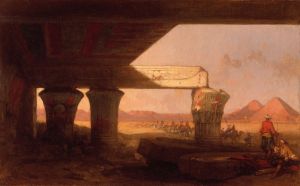

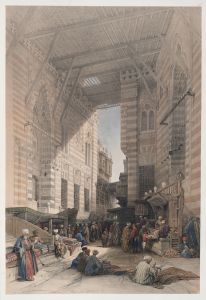
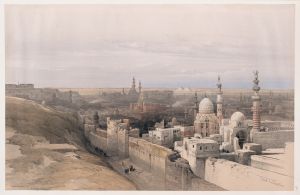
![Dayr el Medeeneh [Dayr al-Madînah], Thebes.](/imgs/217473/s/david-roberts-dayr-el-medeeneh-dayr-almadinah-thebes-248e9138.jpg)
![Front elevation of the Great Temple of Aboosimble [sic]. Nubia.](/imgs/217485/s/david-roberts-front-elevation-of-the-great-temple-of-aboosimble-sic-nubia-c5cdea0a.jpg)

![Karnac [Karnak]. Nov. 29th, 1838.](/imgs/217502/s/david-roberts-karnac-karnak-nov-29th-1838-8df2346d.jpg)
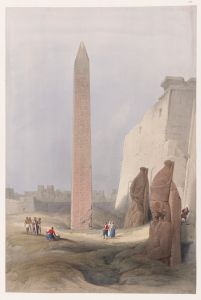
![Siout [Asyût]. Upper Egypt.](/imgs/217539/s/david-roberts-siout-asyut-upper-egypt-88ace28b.jpg)
